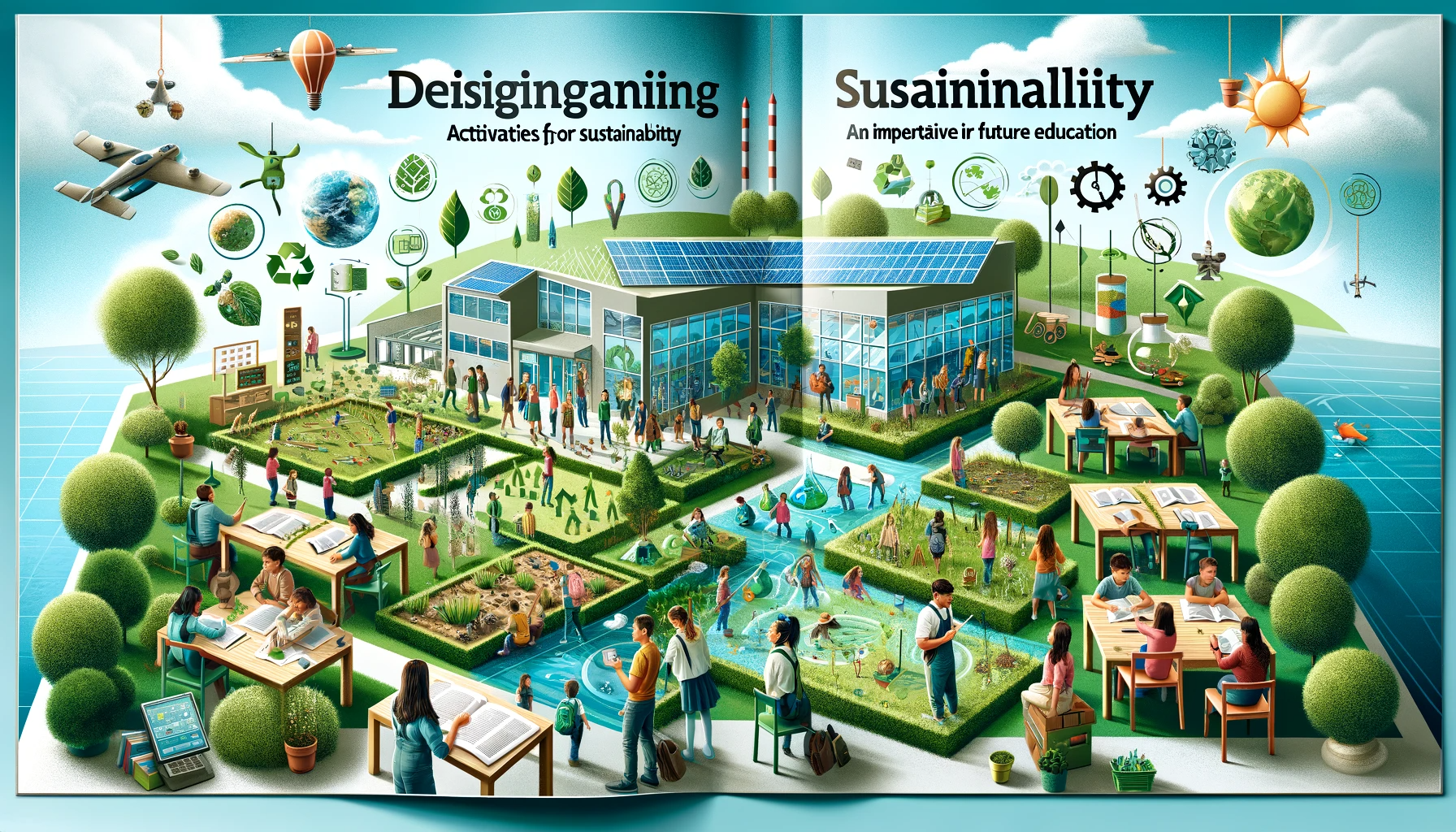Creating a sustainable future requires equipping the next generation with the knowledge, skills, attitudes, and values to tackle the sustainability challenges that lie ahead. In this respect, designing learning activities geared towards sustainability is an important step in fostering environmentally conscious, socially responsible, and economically viable citizens (Sterling, 2001).
One strategy for incorporating sustainability into learning activities is through problem-based learning. Students are presented with real-world sustainability problems to investigate and devise solutions. This approach not only encourages critical thinking but also helps learners understand the complexity and interrelatedness of sustainability issues (Savery, 2006).
Experiential learning is another powerful method for promoting sustainability education. By engaging students in experiences outside the traditional classroom – such as field trips, community service, or internships – they can better understand the implications of their actions on the environment and society (Kolb, 1984).
Moreover, interdisciplinary learning can also foster an understanding of sustainability. By exploring the interconnectedness of environmental, social, and economic issues, students can gain a more holistic understanding of sustainability. This method prepares students to deal with complex sustainability issues that cannot be solved through a single disciplinary lens (Newell, 2001).
Educational games and simulations can also be effective learning activities for sustainability. These tools can help learners understand complex systems, make informed decisions, and appreciate the consequences of their actions in a safe and engaging environment (Dieleman & Huisingh, 2006).
Furthermore, integrating sustainability into everyday classroom practices and routines can also reinforce sustainability concepts. For instance, implementing recycling programs, conserving energy, or organizing sustainability-themed events can cultivate sustainability habits and values (McKeown, 2002).
In conclusion, designing learning activities for sustainability involves incorporating real-world problem-solving, experiential learning, interdisciplinary approaches, simulations, and sustainable practices into the learning process. By doing so, educators can play a significant role in fostering a more sustainable future.
References:
- Sterling, S. (2001). Sustainable education: Re-visioning learning and change. Schumacher Briefings.
- Savery, J. R. (2006). Overview of problem-based learning: Definitions and distinctions. Interdisciplinary Journal of Problem-based Learning, 1(1), 9-20.
- Kolb, D. A. (1984). Experiential learning: Experience as the source of learning and development. Prentice-Hall, Inc.
- Newell, W. H. (2001). A theory of interdisciplinary studies. Issues in Integrative Studies, 19, 1-25.
- Dieleman, H., & Huisingh, D. (2006). Games by which to learn and teach about sustainable development: exploring the relevance of games and experiential learning for sustainability. Journal of Cleaner Production, 14(9-11), 837-847.
- McKeown, R. (2002). Education for sustainable development toolkit. Energy, Environment and Resources Center, University of Tennessee.


